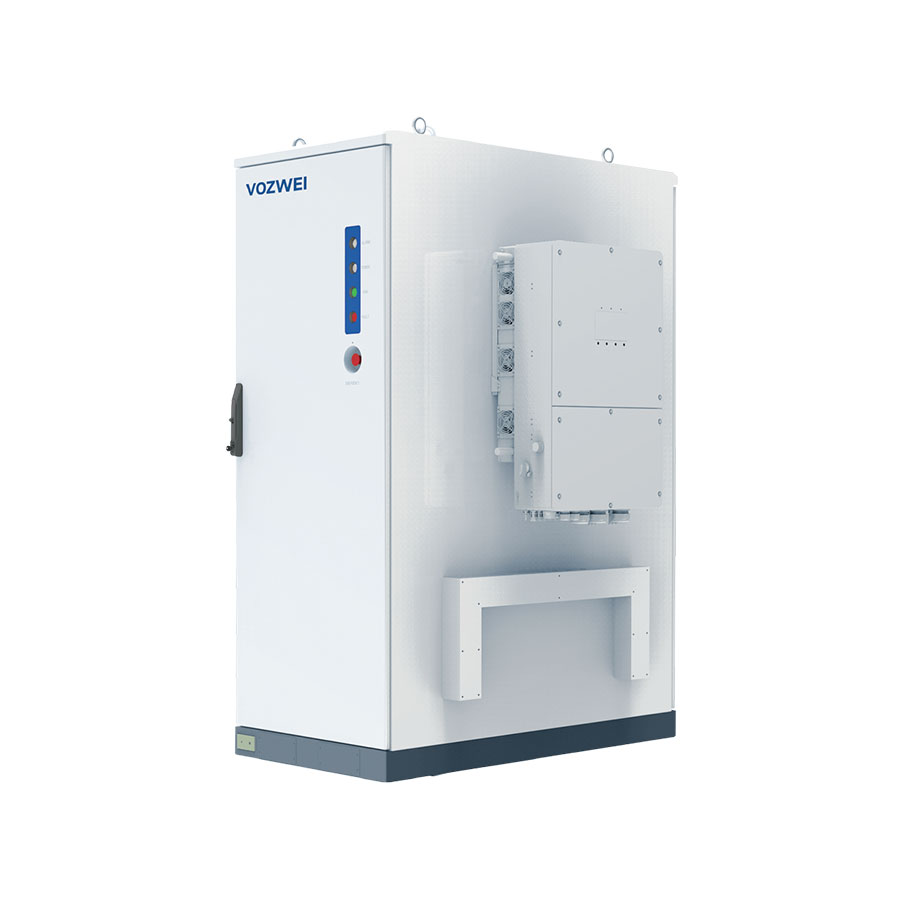V-ESS-120WP ESS Cabinet
- Support PV connection, with higher integration.
- LFP280Ah battery cell system integration, leading cost advantage, 3S fusion.
- 0.96㎡ footprint, easy to transport and install.
- RTE over 90%, DOD up to 100%.
- IP55, optimized ventilation design, temperature difference within 6℃.
- Support multiple ways of operation and maintenance, including onsite, cloud.
- Easy modular design supports parallel connection for convenient system expansion.
- Support multiple brands of hybrid inverter, with higher selectivity.
Technical parameters
| Battery Cabinet | V-ESS-120WP | ||
| Cell type | LFP/314Ah | ||
| Pack configuration | 24.11kWh/1P24S | ||
| System configuration | 120kWh/1P120S | ||
| Rated DC voltage | 384V | ||
| DC voltage range | 336~432V | ||
| Max.charge/discharge rate | 0.5P | ||
| Max.depth of discharge | 100%(25±2℃) | ||
| AC Side | |||
| Max.input power | 60kW | 80kW | 100kW |
| PV voltage range | 150~850V | 150~850V | 150~850V |
| MPPT | 3 | 4 | 4 |
| Max.input current | 40A*3 | 40A*4 | 40A*4 |
| AC Side | |||
| Rated output power | 30kW | 40kW | 50kW |
| Max.output power | 33kVA | 44kVA | 55kVA |
| Rated AC voltage | 400V | ||
| AC voltage range | ±15% | ||
| Grid type | 3W+N+PE | ||
| Rated frequency | 50Hz/60Hz | ||
| Power factor | 0.99/-0.8~+0.8 | ||
| THDi | ≤3% | ||
| DC ratio | <0.5%Ipn | ||
| General | |||
| Max.round trip efficiency | 90% | ||
| Cycle life | ≥8,000 cycles | ||
| Communication | Modbus TCP/IP | ||
| Fire suppression system | Aerosol | ||
| Ingress rating | IP55 | ||
| Cooling | Forced air cooling | ||
| Operating temperature | -25℃~55℃(Derating after 45℃) | ||
| Anticorrosion rating | C4(C5 optional) | ||
| Humidity | 0~95%RH(non-condensing) | ||
| Altitude | 4000m(Derating above 2000m) | ||
| Dimensions(W*D*H) | 800×1,200×2,000 mm | ||
| Weight | 1,200 kg | ||
| Certification | UN 38.3, IEC62477, IEC 61000, IEC 62619, IEC 63056 | ||
Tips: For more information, please refer to the user manual or specification sheet in the following documentation.
Documentation
Intelligent manufacturing
Digital twin, Internet of Things, big data, artificial intelligence, industrial Internet and other technologies are applied to realize digital design, intelligent production, intelligent management, collaborative manufacturing, green low-carbon manufacturing, and security management.
